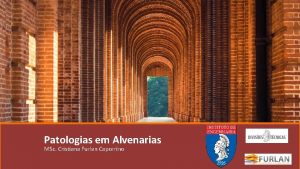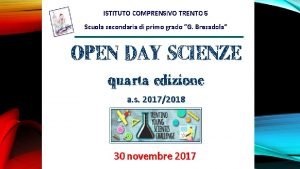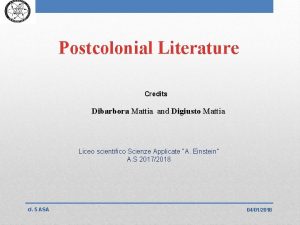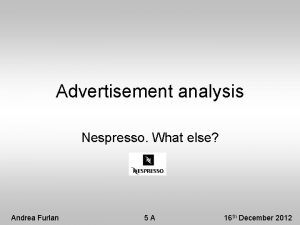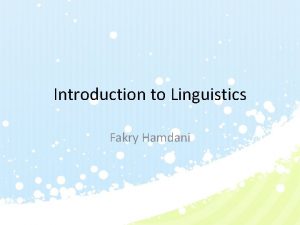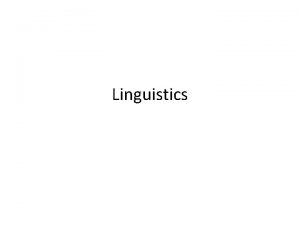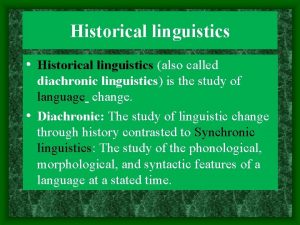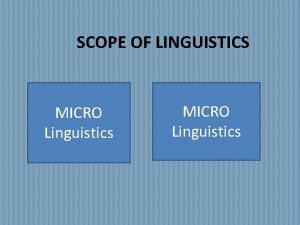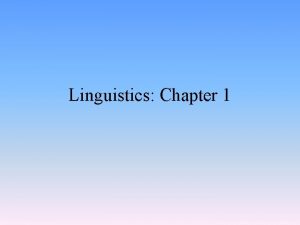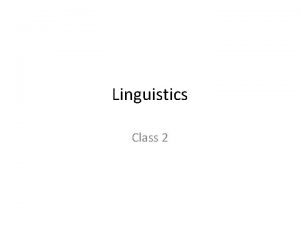The great story of linguistics Andrea Furlan Mattia









- Slides: 9

The great story of linguistics Andrea Furlan Mattia Giavedoni Francesco Piazza

About linguistics Object of study: human language (form, meaning and context) Developing context: from the modern age (18901930) to nowadays Categories: theoretical linguistics (including semiotics, the study of signs) and descriptive linguistics Main contributors: Ferdinand de Saussure, Roman Jakobson, Julia Kristeva, Jacques Lacan, Jacques Derrida, Michel Foucault, Frederic Jameson, Valentin Voloshinov

Semiotics: a few quotations “Semiotics is the science which studies the role of signs as part of social life”, Ferdinand de Saussure “Semiotics is in principle the discipline studying everything which can be used in order to lie”, Umberto Eco “Language disguises thought”, Ludwig Wittgenstein “No word matters. But man forgets reality and remembers words”, Roger Zelazny

Why in ‘ 900? The modern age → period of crisis of moral values No more centre of reference Einstein’s Theory of Relativity → need to rebuild science on new bases Fracture between signifier and signified → necessity to reconstruct linguistics

Ferdinand De Saussure Studies on synchronic language (how language works in action) The link between signifier and signified is arbitrary → it is only due to custom Meaning is constructed through difference → antithetic binary pairs (good/evil, man/woman…) Development of structuralism → possibility of analyzing a culture through a structuralist methodology Death of the author (Roland Barthes) → since language is regulated by its own laws, the author ceases to be important

Jacques Derrida and the deconstruction In each couple of contraries, one term needs the other to exist → meaning is constructed through différance Différance → “to differ” and “to defer” → meaning is left to the reader (there is never a stable and ultimate interpretation) Writing is about absence, speaking about presence Born of post-structuralism (meaning slips from a signifier to another, never arriving at a final signified)

Roman Jakobson distinguishes six communication functions: Referential. Aesthetic/poetic. Emotive. Conative. Phatic. Metalingual. Each function is related to a type of text, for example in poetry the dominant function is the poetic one: the focus is on the message itself.

Roman Jakobson’s ideas Jakobson’s three principal ideas in linguistics are: linguistic typology (the classification of languages in terms of shared grammatical features) Markedness (a study of how certain forms of grammatical organization are more “natural” than others) linguistic universals (the study of the general features of languages in the world)

Roman Jakobson -1982) Summing up (1896 Jacques Derrida (1930 -2004) T O D A Y T H E M O D E R N The historical line of linguistics A N D B E Y O N D A G E Ferdinand De Saussure (1857 -1913) Jacques Lacan (1901 -1981)
